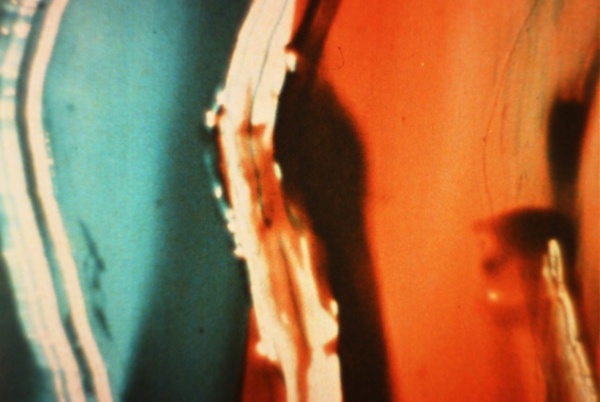Len Lye's Life
1901
Leonard Charles Huia Lye is born in Christchurch, New Zealand on 5 July 1901; his childhood spent between Christchurch, Cape Campbell and Wellington before travelling to Sydney and Samoa as an adult, settling in London in 1926.
1928
Lye joins the Seven and Five Society, Britain’s leading group of avant-garde artists (including Ben Nicholson, Barbara Hepworth, Henry Moore). In 1929 Lye is elected to the Society’s hanging committee.
1929
Lye begins making experimental films. The first, Tusalava, is premiered by the London Film Society. Lye attends Film Society workshop lead by Sergei Eisenstein.
1933-38
In addition to working for the G.P.O Film Unit, Lye is commission by numerous commercial sponsors, producing Kaleidoscope (1935) for the Imperial Tobacco Company, the puppet-animation film Birth of the Robot (1936) for Shell-Mex and BP, and Colour Flight (1938) for Imperial Airways.
1935-37
Lye's abstract, colour film A Colour Box is screened in cinemas throughout Britain, becoming the first cameraless or ‘direct film’ screened to a general audience. The G.P.O. Film Unit employs Lye to produce further experimental films, A Rainbow Dance (1936), N. or N.W. (1937) and Trade Tattoo (1937).
1936
Lye exhibits three works, Snow Birds Making Snow, Pond People and Self Planting at Night in The International Surrealist Exhibition, at the New Burlington Galleries alongside artists such as Man Ray, Marcel Duchamp, and Joan Miro.
1940-51
Lye’s films reflect the wartime climate with propagandistic works like Musical Poster #1 (1940), sponsored by the Ministry of Information. In 1944 Lye relocates to the United States to direct for Time Inc., including newsreels for The March of Time.
1952
Lye turns his attention once more to experimental film, with Color Cry (1952-3), All Souls Carnival (1957) and Free Radicals (1958). Free Radicals is an acclaimed masterpiece however Lye declares himself ‘on strike’, largely leaving filmmaking and re-directing his efforts to producing kinetic sculpture.
1960
Lye tests the first of several Wind Wand sculptures on a New York lot. Wands are exhibited at the Southern Illinois University Carbondale (1962), Toronto International Sculpture Symposium (1967) and the Pulitzer Foundation for the Arts (2014).
1961
On the 5 April 1961, Lye performs An Evening of Tangible Motion Sculpture at the Museum of Modern Art, New York.
1961-66
Lye exhibits his work in a wave of exhibitions devoted to kinetic art, notably On the Move (1964) and Len Lye’s Bounding Steel Sculpture (1965) at Howard Wise Gallery, New York, Bewogen Beweging (1961) at the Stedelijk Museum Amsterdam and Directions in Kinetic Sculpture (1966) at Berkeley Art Museum, California.
1977
The Govett-Brewster Art Gallery presents Kinetic Works, the first exhibition of Lye’s work in his homeland of New Zealand
1980
Lye establishes the Len Lye Foundation to care for his works and continue his legacy, just months before his death in Warwick, New York on 15 May 1980.


